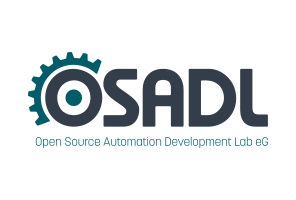Dates and Events:
|
OSADL Articles:
2023-11-12 12:00
Open Source License Obligations Checklists even better nowImport the checklists to other tools, create context diffs and merged lists
2022-07-11 12:00
Call for participation in phase #4 of Open Source OPC UA open62541 support projectLetter of Intent fulfills wish list from recent survey
2022-01-13 12:00
Phase #3 of OSADL project on OPC UA PubSub over TSN successfully completedAnother important milestone on the way to interoperable Open Source real-time Ethernet has been reached
2021-02-09 12:00
Open Source OPC UA PubSub over TSN project phase #3 launchedLetter of Intent with call for participation is now available |
Real Time Linux Workshops
1999 - 2000 - 2001 - 2002 - 2003 - 2004 - 2005 - 2006 - 2007 - 2008 - 2009 - 2010
Tenth Real-Time Linux Workshop on October 29 to November 1st, 2008, in Guadalajara, Mexico
Shared Memory in XtratuM/PaRTiKle
Pu Yiqiao, Bai Shuwei, She Kairui, Zhou Qingguo, Nicholas Mc Guire
In XtratuM/PaRTiKle there is only FIFO in this system which is suitable for transfer stream data. But when we should exchange large piece of data, the overhead is big. So we realize another communication mechanism which is usually used in real-time operating systems: shared memory. Shared Memory is a common IPC using to share data among several processes which is a portion of memory can be accessed by more than one process. Shared Memory is just like a segment of memory, which can be mapped into address space of different domains of XtratuM including Linux. So people can access any part of the segment in both real-time domain and non-real-time domain. There are three parts of share memory: the device driver in both Linux and PaRTiKle, and an independent physical memory management module. So far, we have completed XM-SHM V1.0 and XM-SHM V2.0. In the first version we will create 8 fixed share memory devices, whose size is about 8KB. It will provide an interface for setting up the memory map and the synchronicity between the mapped regions. The number and size of shared memory are both fixed, and the memory segments are fixed when the XM-SHM is loaded. In XM-SHM V2.0, the segments will be allocated dynamically, they will be allocated when the domain request and can be resized. In this paper, the design and implement of XM-SHM V1.0 and V2.0 will be described.




